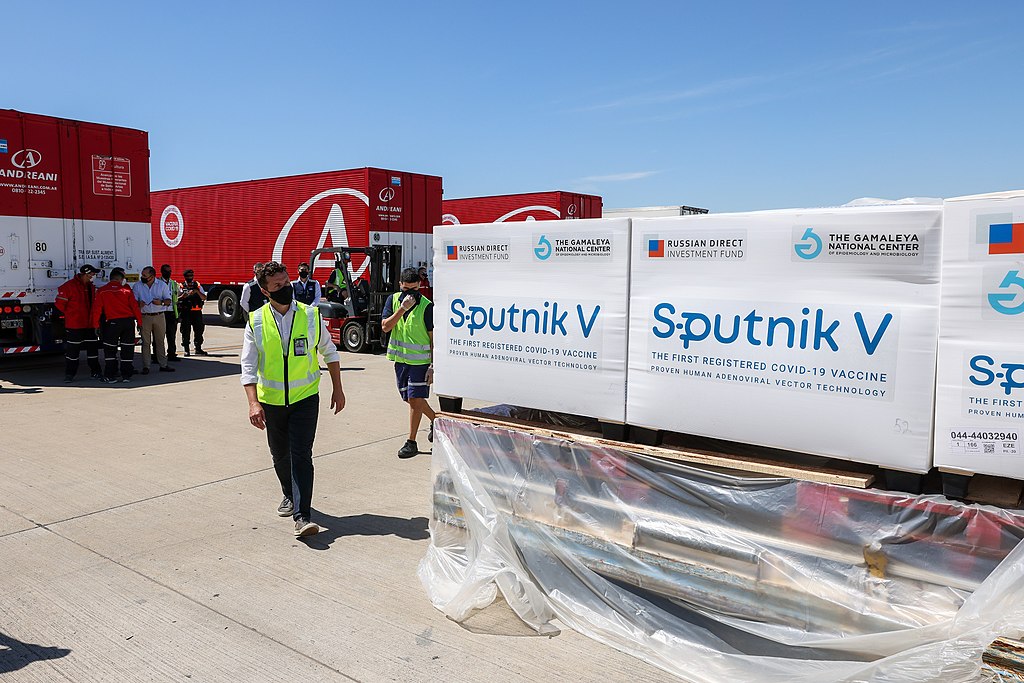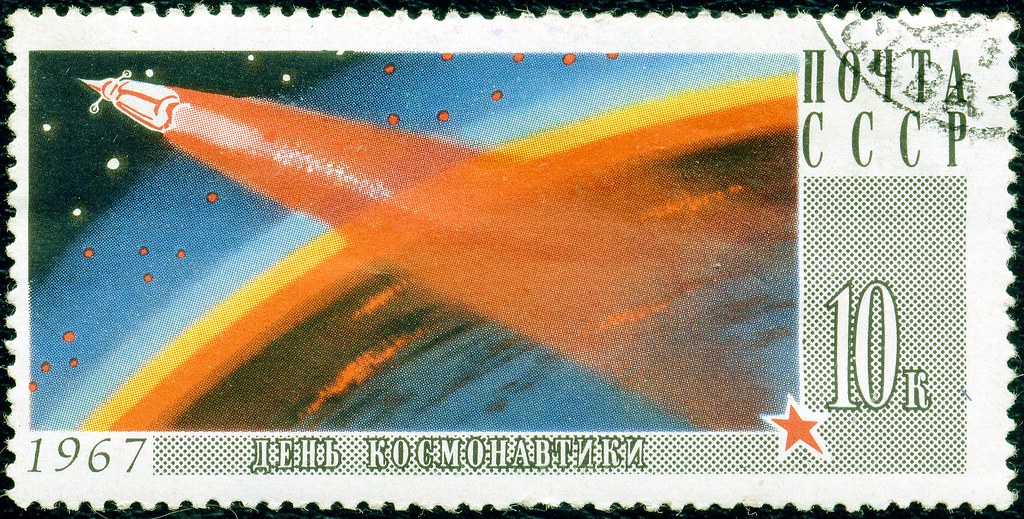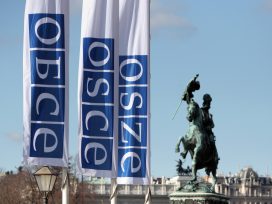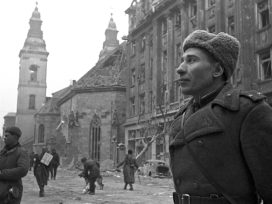Russia’s COVID-19 vaccine could be one of the most effective jabs available. Yet, its media coverage in the West has revived Cold War stereotypes. Vladimir Putin has also triggered suspicions. Nevertheless, the medical legacy from the Soviet era has prepared researchers precisely for such emergencies.
A distinct time-warp quality characterizes western reactions to Russia’s Sputnik V vaccine. The international reception of the jab harkens back to the rhetoric of the Cold War, despite the fact that the COVID-19 pandemic permeates every aspect of contemporary life. But some knowledge of Russia’s past can lend nuance to present discussions.
Russian officials confirm the name is meant to evoke the launch of the first artificial satellite in 1957, and its significance as a triumph for both Russia and humanity. But to many observers, the more powerful association has been the competition of superpowers. Much ink has been spilled on Russian ‘vaccine diplomacy’ and its relation to geopolitical struggles for influence, both in Europe and the developing world. Suspicions that Russian motives have more to do with power politics than public health are central in western media coverage.
Sputnik V was created at the Gamaleya National Research Center for Epidemiology and Microbiology in Moscow in early 2020. Like the vaccines from AstraZeneca and Johnson & Johnson, it is based on adenovirus viral vector technology. In August 2020, based on phase 1/2 trial results, Russian health authorities issued a conditional approval, and mass vaccinations began in Russia in November 2020. But from the beginning the rollout was international. By the end of 2020, vaccine shipments had arrived in Belarus, Argentina, and Serbia. To date, Sputnik V has been approved in 66 countries. And despite difficulties with ramping up production, at least 10 million people have received the shot.

Photo by Casa Rosada (Argentina Presidency of the Nation), CC BY 2.5 AR via Wikimedia Commons.
Meanwhile, Russian researchers published their phase 3 trial results in February 2021, which indicated an efficacy of 91.6% and a strong safety profile, which renders Sputnik V one of the most effective vaccines against COVID-19 so far. Real world data, although still limited, has so far largely confirmed these findings.
Still, many observers have not been convinced. As in the case of the first Sputnik, their reactions display surprise that Russia is capable of such a scientific feat. The Soviet pharmaceutical sector had long been criticized for its lack of innovation; the collapse of the Eastern Bloc in the 1990s seemed to leave Russia entirely bereft.
While the Russian state has made large investments in the pharmaceutical sector in recent years, few outsiders have believed it could produce competitive new products for world markets.
But not only prejudices are to blame. The Russian state’s opacity about the vaccine’s development process, reticence in sharing data, and aggressive responses to legitimate questions, have created concerns that not all is as it seems. The result has been suspicion about Sputnik V, a scepticism that sometimes goes beyond the factual evidence. Faced with the black box of secrecy, many observers have filled in the blanks with their own fears and fallen back on Cold War-era tropes of the Soviet enemy.
This is especially unfortunate at a moment when the global challenges of vaccination have become starkly apparent. These combative approaches replace complex scientific debates with mere calculations of power. Some insight into the long history of Russian medical science might help avoid misunderstandings and set discussions on a more productive track.
The spectre of politics
English-language coverage, particularly in the United States and its close European allies (including the UK), has overwhelmingly focused on the political aspects of Sputnik V. From this perspective, the vaccine appears not as a public health tool, but a Russian campaign to destabilize western alliances and win influence in the developing world. Such arguments are not necessarily unwarranted. Russian officials’ oft-repeated declarations that the ‘vaccines must remain outside politics’ are unconvincing, given their tendency to disparage rivals — not to mention the recent allegations of a covert Russian campaign to discredit western vaccines. Still, the politicized reactions have not helped matters. The coverage of Sputnik V has drawn as often on Cold War rhetoric as on contemporary Russian reality. It is worth examining these images and questioning their implications.
The political focus of many American and European observers harkens back to the Cold War tendency to always seek geopolitical motivations behind Soviet actions. The first Sputnik is a case in point. As the New York Times warned ominously in October 1957, ‘the main purpose of the sputnik, the man-made moon launched by the Soviets, is political rather than scientific,’ aimed at boosting Soviet ‘rocket diplomacy’ and ‘breaking up our alliances.’ Such language, repeated almost word-for-word, appears in analyses of Russian ‘vaccine diplomacy’, understood as a ‘tool of soft power’ intended to ‘sow division’ in the European Union and around the world — even described as yet ‘another hybrid weapon to divide and rule.’

Photo by Acoustic Waffles.
Politics lead, almost unfailingly, to the man who dominates the political landscape of Russia: President Vladimir Putin. Media analyses often begin with Putin’s dramatic (if slightly misleading) announcement of Sputnik V’s approval on August 11, 2020. They tend to attribute Russian actions to ‘the Kremlin’ or Putin himself.
As in the Cold War, developments in Russia are analyzed as the result of either the will of a single leader or the dynamics of a small group of elites. One should not deny the centrality of Putin in the current Russian political system, nor the extent to which he has inserted himself into vaccine discussions. Yet, as Tony Wood has argued, the conflation of Putin with Russia ‘reduces a whole range of political, economic and social questions to the swings of one individual’s mood or morality,’ ignoring the many forces shaping the country and rendering individual achievements invisible.1
Identifying the vaccine with Putin and his politics leads, ultimately, to questions about the credibility of Russian scientific claims. A widespread conviction, articulated most famously by philosopher Karl Popper, holds that an ‘open society’ – individualistic, rationalistic, and competitive – forms the precondition for genuine scientific endeavor.2 During the Cold War, Soviet science was often dismissed, on these grounds, as tainted by ideology and politics — a claim symbolized powerfully by the ‘Lysenko Affair’, in which Communist leaders intervened directly in a scientific dispute over genetics, to disastrous effect for both Soviet agriculture and biological research.3
A number of the concerns about Sputnik V are quite legitimate and deserve to be addressed by open communication from Russian scientists and officials. But assuming fraud on the Russian side until proven otherwise is neither fair nor productive.
One Russian analyst has called this tendency a ‘trap of confrontation’, and there is no doubt that it has narrowed the path to cooperation. The US Department of Health and Human Services, it seems, has actively worked to undermine Sputnik V on the world stage. Tensions have been particularly high in Europe, where the European Medicines Agency (EMA) has been conducting a ‘rolling review’ since early March. The Russian jab has already felled one European leader, and created tensions within the European Union. As an unnamed European diplomat summarized the situation: ‘we are quite capable of tying ourselves in knots … without any help from the Russians.’
Soviet legacy: bold responses to medical emergencies
Sputnik V does reflect a powerful Soviet legacy, one that bears little resemblance to the Cold War clichés that have dominated the discourse. The urgency, the creativity, and even the boldness with which Russian scientists pursued solutions to the COVID-19 crisis will be surprising only to those unaware of this historical background.
Many Russian medical institutions were formed in an era of profound crises, during a series of devastating epidemics that followed the Russian Revolution and Civil War.
The Gamaleya Centre, creator of Sputnik V, traces its origins to 1891, when Filipp Blumenthal founded a bacteriological office in Moscow. In 1900, this was expanded into the Blumenthal Chemical-Bacteriological Institute, the most prominent of its kind in the Russian Empire. But origins are rarely so simple. Another starting point, perhaps more relevant, came in 1919, when this private institute was nationalized by the Soviet government and placed under control of the Ministry of Health. Blumenthal joined the ranks of Russian émigrés in Paris; his namesake became the State Bacteriological Institute, and after many reorganizations, the Gamaleya Centre.
These events were only part of the flurry of public health activities that followed the Bolshevik seizure of power in 1917. These efforts owed as much to the decades of medical reform effort preceding the October Revolution as to the revolutionaries’ own ideas.
Debates over health had become politically charged during the early decades of the 20th century, as doctors identified the tsarist autocracy and the inequality of Russian imperial society as the root causes of poor health conditions.4 Reformers dreamed of a new health system, rationally organized and accessible to all. This dream, or at least one version of it, culminated with the creation of the Ministry of Health in the summer of 1918.
Pressing realities, alongside pre-revolutionary dreams, shaped the Soviet health system. After its birth during the long ‘continuum of crisis’ of 1914-1921, the new Soviet state faced a profound medical emergency.5 Endless violence and societal collapse resulted in a devastating series of disease epidemics, affecting millions: influenza (part of the 1919 global pandemic), cholera, typhus, smallpox, and malaria.6 The situation was worsened by the economic blockades of the Civil War period, contributing to extreme shortages of basic medical supplies.
Russia’s small bacteriological and pharmaceutical sector was entirely nationalized in 1918-1919, as the state mobilized and consolidated resources to address the crisis.7 As the Gamaleya Centre’s website notes, work in these years consisted of ‘producing urgently needed serums and vaccines’ and other practical tasks.
Nationalization, consolidation, and emergency production may sound like bureaucratic processes, but they involved a great deal of creativity and initiative in the chaos of that time. In his autobiography, parasitologist Evgenii Martsinovskii recalled founding a bacteriological institute to produce vaccines on his own initiative; he also remembered scouring Moscow for a vaccine reserve hidden by opponents of the Soviet government. Soon enough, his operation was merged with the State Bacteriological Institute.8
The postwar epidemics in Eastern Europe (affecting many countries beyond Russia) left a profound mark on the region and the world. One of their results was the creation of the League of Nations Health Organisation — a precursor to the World Health Organization (WHO).9
Another result was the creation of the Soviet Ministry of Health and the tightly interwoven network of research institutes, medical clinics, and production facilities it controlled.
Integration within the state was a defining feature of the Soviet medical system and stood in sharp contrast to the private companies and pharmaceutical markets in the United States and Europe. As for the Gamaleya Centre, it remained deeply involved both in the development and the production of bacteriological products, a tradition that continues today. The Centre’s ‘Medgamal’ branch is one of the approved Russian producers of Sputnik V).10
In 1932, pioneering Russian-Ukrainian microbiologist Nikolai Gamaleya became director of the institution that would one day bear his name. Gamaleya too was a product of both Russian medical tradition and the revolutionary epoch. Once a collaborator of Pasteur in Paris, he introduced the rabies vaccine to Russia in the late 19th century. During the crisis years, he worked on smallpox in Saint Petersburg, developing the vaccination regime that eliminated the disease within the USSR in the 1930s.11 Under his leadership and since his death in 1949, the Centre developed an astonishing range of scientific work: vaccines, antibiotics, and antitoxins, and research in epidemiology, microbiology, virology, immunology, and more.
Meanwhile, the Soviet health system never lost the boldness instilled during its early years. A maverick mode of operation reemerged repeatedly over time. Its peak came during the Second World War, when the Gamaleya Centre reprised its Civil-War role as a pharmaceutical enterprise, mass-producing vaccines and other medications.
It was also visible in a string of bold Soviet initiatives related to infectious disease. In 1952, Soviet specialists launched a malaria eradication plan in their own country, several years before the WHO Global Malaria Eradication Programme. In 1958, Soviet delegates at the WHO put forward proposals for global smallpox eradication.
Personal courage – and even recklessness – also played a role. Examples of scientists self-testing medicines abound, most famously Marina Voroshilova and Mikhail Chumakov, who dosed themselves and their family with Albert Sabin’s oral polio vaccine. Although rarely mentioned in critiques of Russia, such medical risk-taking is hardly alien to the histories of major western European countries, nor is it confined to the distant past. For better or worse, this maverick mode has remained visible in the Russian response to COVID-19 as well.

Is it a satellite or a COVID shot in outer space? Russian stamp art from a space series from 1967. Photo by Vintageprintable1 from Flickr
Gold standards and their discontents
Contemporary Russia is not the Soviet Union. Indeed, the tendency to conflate the two is the source of many misinterpretations. But neither is Russia the ‘normal’ (that is: westernized) country that 1990s strategists assumed would emerge from the market transition that followed the Soviet collapse. In the pharmaceutical sector, although the post-Soviet era has brought exposure to western standards and norms, alternative systems have remained.
Regimes of pharmaceutical regulation are not laws of nature. They are based on assumptions and judgements about the nature of truth and the proper procedures for obtaining it. This has often been forgotten in commentary on Russia, where deviations from western norms are often portrayed as evidence of ill intent.
Vladimir Putin has done much to feed this perception, and it be understood within the broader trend of ‘vaccine nationalism’. The actions of leaders such as Donald Trump and Boris Johnson, amid widespread international jockeying for advantage in the race for vaccines, suggest that political meddling has been the rule rather than the exception. Concerns about political influence over science are thus not limited to Russia, but they have certainly raised more alarms about their achievements.
Putin’s statement on 11 August 2020 added to this by asserting that the vaccine had ‘passed all necessary verifications’ despite the fact that phase three trials had not even begun. Ministry of Health officials quickly clarified that the approval applied only to small and limited groups, that large-scale trials were yet to be conducted, and that mass vaccination was still months away.
But red flags are easy to find. Some have questioned the structure of the clinical trials, particularly the independence of clinical investigators and data analysts from the Gamaleya Centre itself. The EMA completed a Good Clinical Practices inspection of the Sputnik V trial in late April but has not yet released the results. Researchers at the Gamaleya Centre have also indicated that they administered the vaccines to themselves at a very early stage, following the maverick traditions of their field, but contravening normal practices and, perhaps, ethical rules. Lack of data transparency, too, has been fit into this picture. A letter to The Lancet, written by a group of scientists led by biologist Enrico Bucci, seemed to hint at malign forces behind the secrecy, noting the role of a ‘so-called security department’ in decisions about trial data.
In raising these concerns, observers have made frequent reference to international norms and standards, including the three-phase clinical trial, and the ‘gold standard’ of randomized clinical trials (RCTs). They have less often noted the complex history of these norms, and the long Russian history of forging a different path. In the complex field of international pharmaceutical development, different problems might justify different solutions, as some have noted in relation to RCTs.
Different types of collateral damage
Current standards for pharmaceutical regulation emerged gradually during the 20th century. Above all, they were created to address the problem of profit motives in pharmaceutical markets. In the United States, from the era of the ‘muckraker’ journalists, pharmaceutical reform efforts were driven by fears that market forces put consumer health and safety at risk — fears justified by a long series of tragedies.
The Federal Food, Drug and Cosmetic Act of 1938, for example, came in the wake of a mass poisoning caused by a toxic sulfanilamide preparation, which killed over 100 people. The Kefauver-Harris amendments of 1962 were prompted by the Thalidomide crisis, which resulted in deformities in thousands of children. Recently, the opioid crisis has prompted new fears of profiteering at the expense of patients, and generated new legal and legislative initiatives. The intricate system of regulations, the careful ‘gold-standard’ procedures, can be read as processes to protect consumers from the dangers of for-profit companies.12
In Russia, as we have already seen, the story was very different. The Soviet health system offered a radically contrasting solution to the problem of profiteering: the total elimination of the market.
As Olga Zvonareva has argued, Soviet authorities explicitly rejected the three-phase model of clinical trials, viewing it as unnecessary in a non-market system. The Soviet system, they argued, had no need for structures to ensure objectivity, erase bias, and balance the competing interests of companies, patients, researchers, and society. Instead, Soviet drug development proceeded through a dense web of connections, often informal, linking researchers, administrators, clinical investigators, regulators, and factory managers. It relied on non-randomized methods like cohort studies rather than RCTs.13
One need not accept this system as a worthwhile model for pharmaceutical regulation; however, many aspects of the development of Sputnik V become more comprehensible when it is taken into account. Close links between researchers, clinical investigators, and bureaucrats appear less sinister when one considers their history as a normal practice. Self-administration of experimental drugs also appears understandable, if not necessarily advisable, within its own context.
Ironically, the Soviet model of pharmaceutical regulation offered a near-perfect mirror image of western perceptions of Soviet science. Where Cold War observers assumed that Soviet science was enslaved by the state and politics, and worried about the damage this caused, their Soviet counterparts often understood the state as a realm of freedom — from the dangers of the market.
A way forward?
At the time of this writing, regulatory reviews of Sputnik V are ongoing at both the WHO and the EMA. Results are expected in a matter of days, and hopefully they will help to clear the fog of confusion and doubt that has surrounded the vaccine since its introduction, either by confirming or dispelling the many real concerns that have been raised.
In the meantime, it is worth seeking to understand Russian actions on their own terms. International cooperation to end the COVID-19 pandemic must be based on mutual understanding. More than a hundred years of Russian and Soviet medical science stands behind the Sputnik V vaccine — a source of immense pride for researchers at institutions like the Gamaleya Centre. Before resorting to the tired rhetoric of the Cold War, we would do well to learn this history.
Introduction to Tony Wood, Russia Without Putin: Money, Power, and the Myths of the New Cold War (London; New York: Verso Books, 2018).
Karl Popper, The Open Society and its Enemies (London; New York: Routledge, 2011), chapters 10, 23.
For a classic scholarly treatment, see David Joravsky, The Lysenko Affair (Chicago; London: University of Chicago Press, 1970).
John F. Hutchinson, Politics and Public Health in Revolutionary Russia, 1890-1918 (Baltimore; London: Johns Hopkins University Press, 1990); Nancy Freidan, Russian Physicians in an Era of Reform and Revolution, 1856-1905 (Princeton: Princeton University Press, 1982).
Peter Holquist, Making War, Forging Revolution: Russia's Continuum of Crisis, 1914-1921 (Cambridge; London: Harvard University Press, 2002).
K. G. Vasil’ev, Istoriia epidemii i bor’ba s nimi v Rossii v XX stoletii (Moscow: “Meditsina,” 2001), 58-102.
Olga Zvonareva, Pharmapolitics in Russia: Making Drugs and Rebuilding the Nation (Albany: SUNY Press, 2020), 26; V. I. Panfilova, V. B. Turkutiukov, and N. V. Strel’nikova, “Formirovanie pravovykh osnov regulirovaniia obrashcheniia vaktsin i drugikh meditsinskikh immunobiologicheskikh preparatii v Sovetskoi Rossii,” Aktual’nye problem rossiiskogo prava no. 12 (2018).
E. I. Martsinovskii, “Avtobiografiia Prof. E. I. Martsinovskogo,” Meditsinskaia parazitologiia i parazitarnye bolezni no. 1-2 (1935): 14.
Iris Borowy, Coming to Terms with World Health: The League of Nations Health Organisation: 1921-1946 (Frankfurt: Peter Lang, 2009).
Aleksandr Gintsburg, “Mogushchestvo nauki dolzhno byt napravleno na ukreplenie gosudarstva,” Remedium August 2006, 31.
M. Sh. Knopov and V. K. Taranukha, “Nikolai Fedorovich Gamaleia – talantlivyi organizator meditsinskoi nauki (k 160-letiiu so dnia rozhdeniia),” Epidemiologiia i infektsionnye bolezni no. 4 (2018): 204-207; Vasiliev, Istoriia Epidemii, 100-101.
Scott H. Podolsky, The Antibiotic Era: Reform, Resistance, and the Pursuit of a Rational Therapeutics (Baltimore: Johns Hopkins University Press, 2014); Eric W. Boyle, Quack Medicine: A History of Combating Health Fraud in Twentieth-Century America (Santa Barbara: Praeger, 2013); Harry M. Marks, “Trust and Mistrust in the Marketplace: Statistics and Clinical Research, 1945-1960,” History of Science 38 (2011): 343-355.
Zvonareva, Pharmapolitics in Russia.
Published 7 June 2021
Original in English
First published by Eurozine
© Marek Eby / Eurozine
PDF/PRINTIn collaboration with
In focal points
Newsletter
Subscribe to know what’s worth thinking about.
Related Articles

Nine years ago, a slim majority of UK voters chose to leave the European Union – without a clear plan or the tools to make it happen. Five years after the de facto departure, relations are slowly being repaired, driven in part by the increasingly unpredictable political climate in the United States.

An emotive rift exists between being drafted and signing up for military service. Those who prioritize family responsibilities, education and skills, and non-violence aren’t backing the opposition. Defence comes in many forms. Could lessons from Ukraine’s mobilization inform the recruitment challenges potentially facing the rest of Europe?






